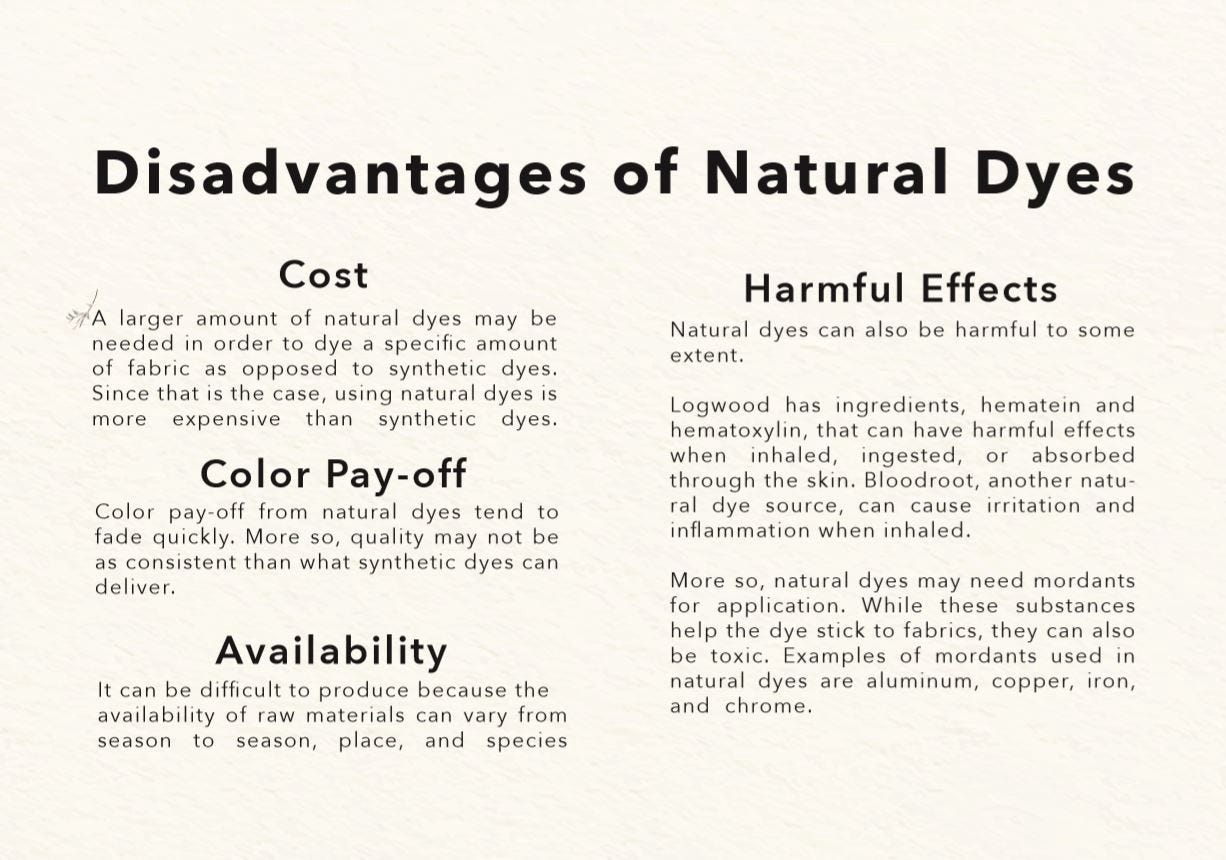Natural Dyes
Natural dyes have an older, more romantic heritage. Indigo, the most commonly known natural dye, is traced back to the days of ancient India’s Indus river valley civilization.
“The use of natural dyes on cotton was India’s unique gift to the world,” says Simran Lal, CEO of GoodEarth, a luxury home and clothing brand in Delhi.
But natural dyes lack the vibrancy of synthetic dyes and rely on arable land to produce the base material, such as cotton, the easiest fabric for natural dyes to adhere to. Conventional cotton, though, requires farms to spend heavily on water.
While the country’s mills have made progress and work is underway to reduce their chemical footprint, rinse water from the dying process is still blamed for contaminating many of India’s rivers.
Why Natural Dyes?
Natural dyes are better products, simply because they do not contain chemicals harmful to health. As such products are healthier and more reliable than the chemical synthetic dyes. ... Natural colors always offer contrasting shades and ranges of hues are impossible to achieve with artificial colorings.
Natural dyes are biodegradable and eco-friendly compared to synthetic dyes. Synthetic dyes have carcinogenic properties, can cause health problems, respiratory diseases, irritations, and the list are long.
We have talked about the pros of Natural dyes let's also talk about the Cons as well!
As we know there are pros and cons to everything. So in such a situation, we should look for the positive aspect and try to find a solution for the cons.
LET'S GO GREEN!!!!



Comments
Post a Comment